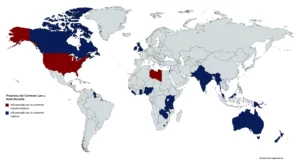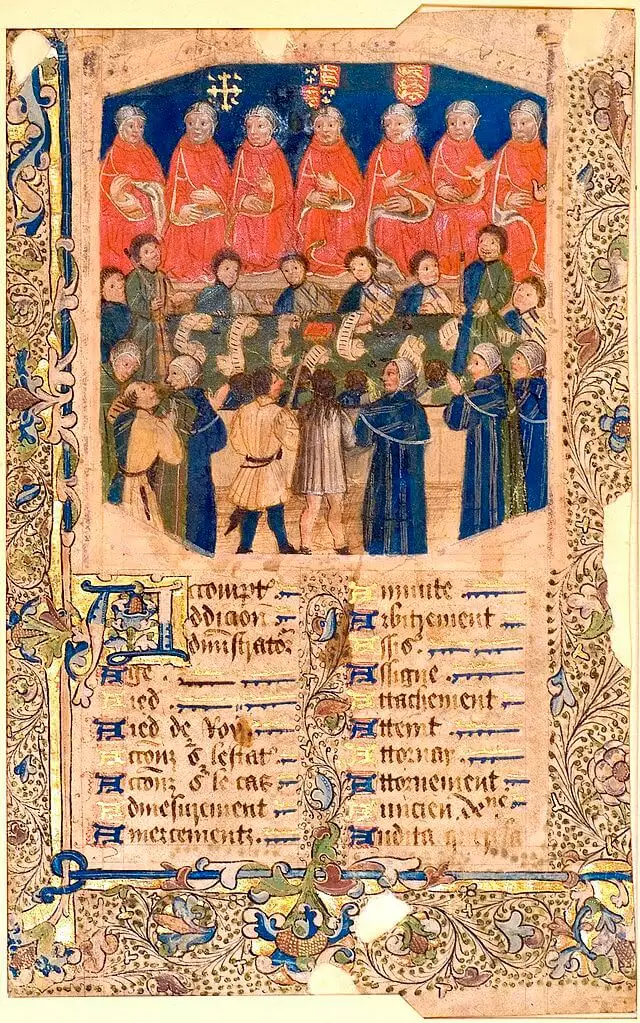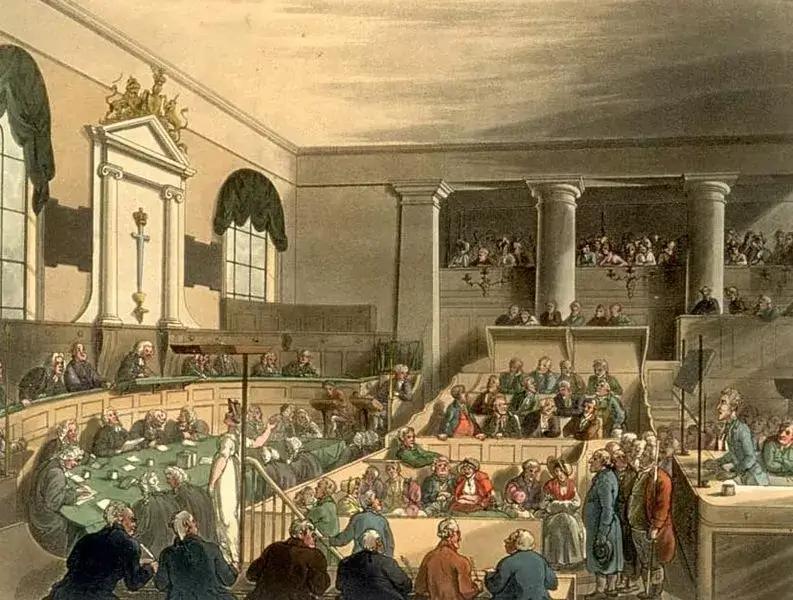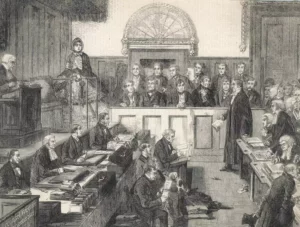Common law

Common law (known as Anglo-Saxon law in civil law countries), derived from the system applied in medieval England, and it is the one used in a large part of the territories that have British influence.
It is the right created by court decisions; in England two different bodies of rules arose: the common law, and later, the civil law; both were adopted as the basis of the law of the American states and are characterized by the fact that they are based more on jurisprudence than on laws. It is a system applicable to citizenship.
Geographical distribution

Systems based on the Anglo-Saxon or coming from the current of this are applied in England, Wales, Ireland, in a mixed way in Scotland, and a large part of the former colonies of the United Kingdom, including the United States, Australia, New Zealand and Canada (with the exception of Quebec, a province in which the continental law system is used in civil law and common law in criminal law). In the United States, the exception is the state of Louisiana, which, as a result of its French heritage, uses a civil law system.In Asia, Hong Kong (as a former British possession) also uses a common law system, which is guaranteed by its constitution, which ensures that it will remain in force (even though sovereignty has returned to China), as well as in India, Malaysia and Singapore. In Africa, South Africa also uses the common law system. In Scotland, a mixed law between continental and Anglo-Saxon is also used, although in this case, unlike that of Quebec, the differentiation is not made on the basis of the branch of law that is applied (criminal or civil), but practically it is an integral and differentiated system, but developed on the basis of the influences of other systems.
Naming discussion

Some scholars consider the name Anglo-Saxon law to be inappropriate, as it would point to a law used by the ancient Angles and Saxons (Anglo-Saxons) in early medieval England. However, the name common law, a literal translation of the term Common Law (its denomination in English) leads to more complications, since it would be confused with the concept of common law used in continental law, which corresponds to a system of law used as basis for others (and generally synonymous with civil law, thus known in the Civil Law system). Likewise, "old" Anglo-Saxon law is not often cited in Spanish, so it is normally usedAnglo-Saxon law or some say Common Law directly.
It should be noted that there is a similar discussion in the English language about the term Civil Law, which is the English translation of civil law.
Basic principles
The Anglo-Saxon Law system is based, above all, on the analysis of judicial sentences issued by the same court or one of its superior courts (those to which the decisions made by said court can be appealed) and on the interpretations that in These sentences are given by law. For this reason, laws can be ambiguous in many respects, since the courts are expected to clarify them (or they have already done so on previous, but similar, laws). This is why standards from the English colonial era are still taught in the United States.
On the other hand, there are judicial interpretations that create new legal figures, which at first was the norm, but today is the exception. However, the nomenclature that recognizes as a statutory crime, for example, the crime created by law, is maintained. Nowadays, it is much more common for laws to create completely new figures or to standardize and fix the rules previously established by court rulings.
A very important detail is that, in later cases, the ratio decidendi, which literally means "reason to decide" or "sufficient reason" in Spanish, of previously issued sentences oblige a court (and all courts below it) to rule the same or similar way. For this reason, the study of the system is based on the detailed analysis of the sentences from which the norm is induced, a study that ends in the elaboration of a "typical case", which is compared with the situation under study to see if it is similar. or not. On many occasions, various sentences that contain the same principle are analyzed, seen from different perspectives, to finally extract the norm that will be applied to the case under study.
Comparison with the continental system

The main difference between the European continental law system and the Anglo-Saxon system lies in the different hierarchy that exists between the various "sources" of those rights. Anglo-Saxon Law is a "jurisprudential" system, insofar as its main source is judicial rulings (all of them is called "jurisprudence"), which have a "binding" character, that is, they are mandatory for all the judges, who cannot deviate from decisions previously made by other magistrates. On the other hand, continental law, due to the influence of Roman law (which, from its beginnings, was concerned that legal norms be written, so that everyone could know them), is an eminently "legal" law, while the main source of it is the law. In the continental system, the sentences previously issued by other judges are not "binding" for the rest of the magistrates. Not even the sentences issued by courts of the last instance, such as the Supreme Courts, are binding on the judges of the lower instances.
Seen from the point of view of jurisprudence (and not of the sources of law), it can be said that, while in the Anglo-Saxon system each decision of each judge establishes a firm jurisprudential basis and has the status of a legal norm, this does not happen in the continental system, in which it matters little that there are numerous concordant sentences regarding a given matter: this does not imply an obligation for any judge to rule in accordance with that "trend" and only complements the legislation regarding the doctrinal current on a certain matter, which may be cited at trial but will not bind the judge. In the continental system, only the sentences of the Supreme Court establish jurisprudential precedent and can be cited, while the other sentences only establish jurisprudence. In other words, in the continental system, each judge can resolve the case that is presented to him in the way that he considers most convenient or fair, and can even deviate from the majority jurisprudence (although it is followed by judges who are above him and who, eventually,, they must know in a review of their decisions), as long as they can produce a ruling adjusted to the law, and with grounds that justify that decision (otherwise, it is most likely that their sentence will be annulled by the higher court). The only exception that, within the continental system, exists for this general principle are the so-called "plenary rulings", as explained below. In most of the countries adhering to the continental system, there are courts that act divided into "chambers", which, in turn, they are usually composed of several "chambers", each of which handles different cases. It may happen that the different rooms of the same chamber issue disparate solutions regarding the same issue: for example, that some recognize a right and others do not, despite there being a relative homogeneity in the factual situations raised before them. These discordant interpretations of the laws generate a situation of instability in the system, which is known as "legal insecurity". In order to avoid this undesirable situation, all the chambers of the chamber meet (for this reason it is said that the Chamber meets "in plenary session") and agree on a single interpretation for a certain rule. This decision is called "plenary ruling", and is binding, therefore, it must be followed by all the judges of that chamber, as well as by the lower judges who act within its orbit. Plenary rulings (with the different variants that they may present in the different States) are the only case, within the scope of the European continental system, in which judicial precedents are mandatory for judges, requiring as the only requirement for such a condition that the sentence or plenary agreement so expressly provides, otherwise it will only have the quality of a non-binding "legal doctrine".
Current situation of Anglo-Saxon Law

At present, the difference between the two systems is becoming smaller, since there is a strong tendency in Anglo-Saxon law towards the "codification" of legal rules, that is, a growing production of written rules, which are gradually displacing the old judicial precedents and are replacing them with written norms. This phenomenon is possible thanks to the enormous flexibility that characterizes Anglo-Saxon law, unlike what happens with the continental system, in which the existence of written codes and regulations has given it a more "rigid" character. The aforementioned flexibility of Anglo-Saxon Law can be verified in the circumstance that it began as a system of customary or customary law,common law "). Subsequently, and due to the performance of the judicial courts, it evolved until the precedents rose as the main source of law, and the system became one of "jurisprudential law". It remains to be seen, now, if the aforementioned trend towards codification that is modernly verified in the States enrolled in the Anglo-Saxon system, does not end up turning it, too, into a "legalistic" system, such as the continental one.
- Judicial Precedent or Case Law: similar to what we call case law.
- Legislation or Statutory Law: the laws, which can be parliamentary acts ( Act of Parliament) and regulatory provisions and delegated legislation ( Delegated legislation) issued by the central or local government, such as ministerial orders ( ministerial orders) and municipal ordinances ( local by-laws).
- Custom: the custom, such as merchant uses ( law merchant)
- Books of authority: the doctrine.